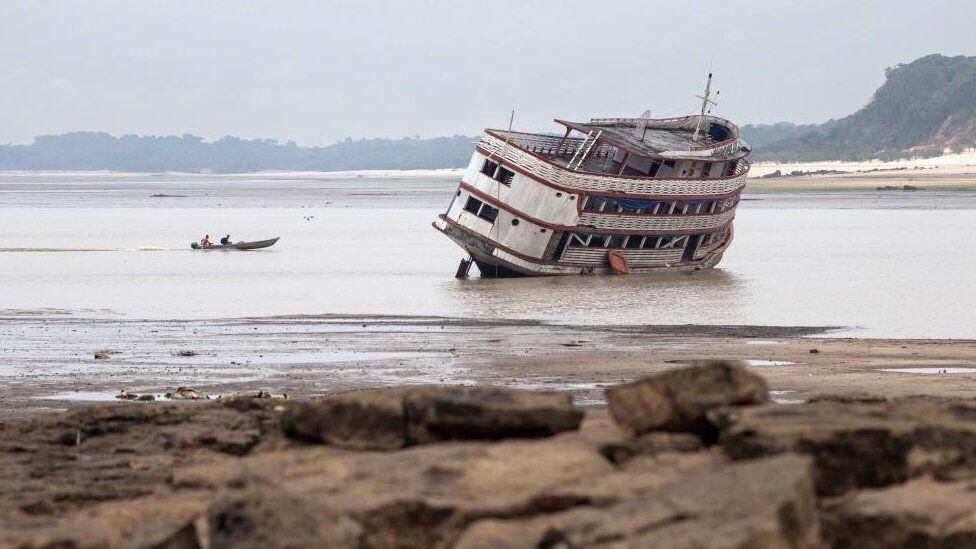A drop in water levels in the Amazon River has revealed rock carvings that had been almost completely submerged since they were carved more than a thousand years ago.
A severe drought made it possible to easily see the human faces carved into the rocks of the coast.
WATCH: Israel shows footage recorded by Hamas militants’ body cameras during October 7 attack
Some were spotted during a previous drought, but archaeologists say this time they were able to locate a greater variety of carvings.
The discovery was made in the city of Manausin northern Brazil.

The ancient faces appeared on a stretch of coast known as Ponta das Lajes, close to where the Rio Negro and Rio Solimões flow into the Amazon.
Archaeologist Jaime Oliveira told the local press that they were carved by people who lived in the area in Pre-Columbian era.
“This region is a pre-colonial site that has evidence of occupation dating back to between 1,000 and 2,000 years ago” he noted. “What we’re seeing here are representations of anthropomorphic figures.”

Another rock has grooves that are believed to have been used by the indigenous people of the region to sharpen their arrows.
The sculptures were last seen in 2010, when the water level of the Rio Negro fell to 13.63 meters.
On Sunday the river level fell below 13 meters for the first time and on Monday it fell even further, to 12.89 meters.

The Brazilian government attributes the drought to climate change and the phenomenon The boywhich caused the volume of precipitation in the north of the Amazon to fall below the historical average and the water in the rivers to fall to almost record levels.
Source: Elcomercio
I am Jack Morton and I work in 24 News Recorder. I mostly cover world news and I have also authored 24 news recorder. I find this work highly interesting and it allows me to keep up with current events happening around the world.

:quality(75)/cloudfront-us-east-1.images.arcpublishing.com/elcomercio/JKSZQSEWYRCFZF56TZM5THIWB4.jpg)

:quality(75)/cloudfront-us-east-1.images.arcpublishing.com/elcomercio/HFBLKGWGLZGBPGNSQ7B7PPX4KU.jpg)
:quality(75)/cloudfront-us-east-1.images.arcpublishing.com/elcomercio/FX5BCG4WURFCLMV5I7DNEI4QPU.jpg)
:quality(75)/cloudfront-us-east-1.images.arcpublishing.com/elcomercio/Z3CLDJXAPZAWBGSL2QFM4N5IJA.jpg)

